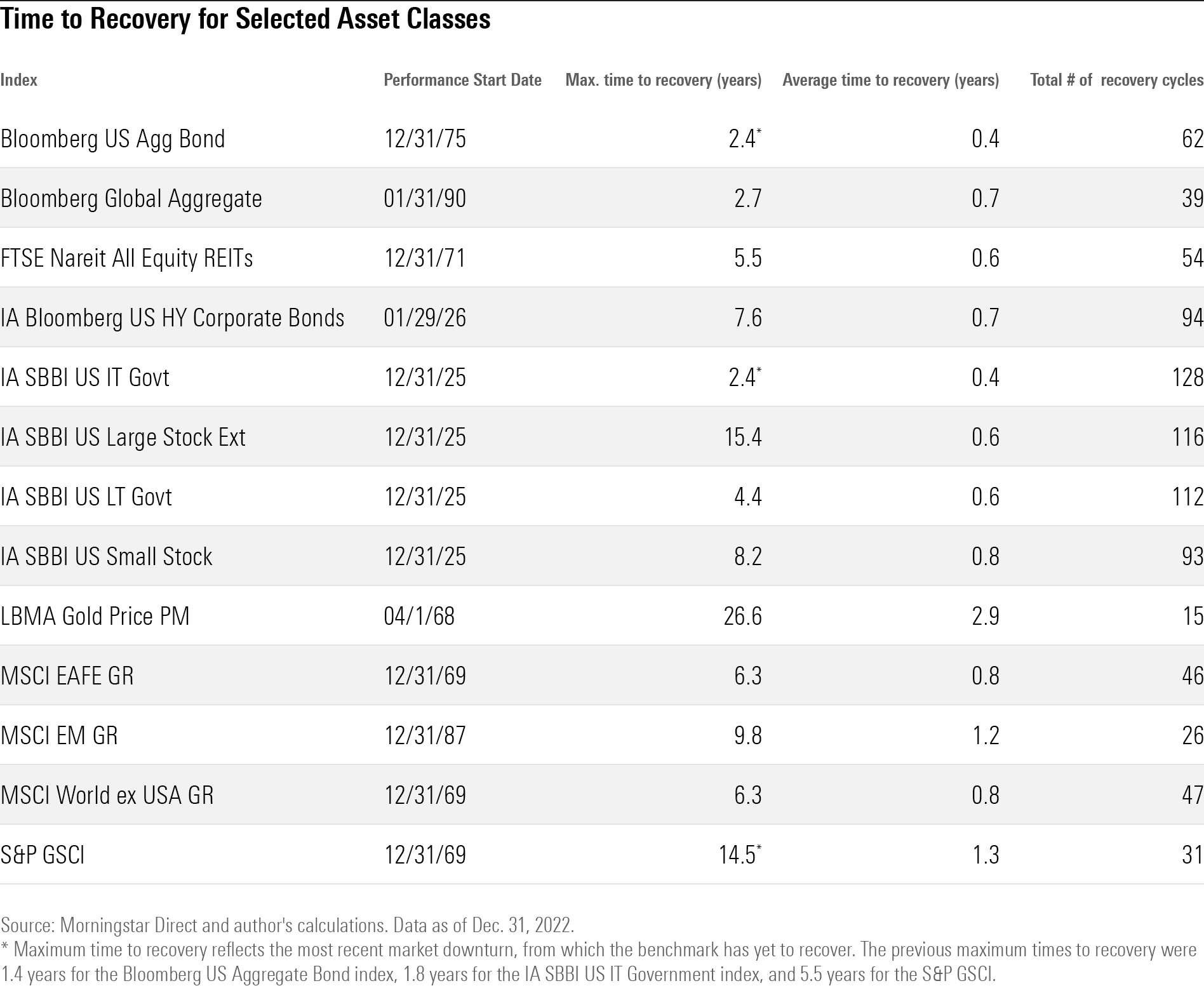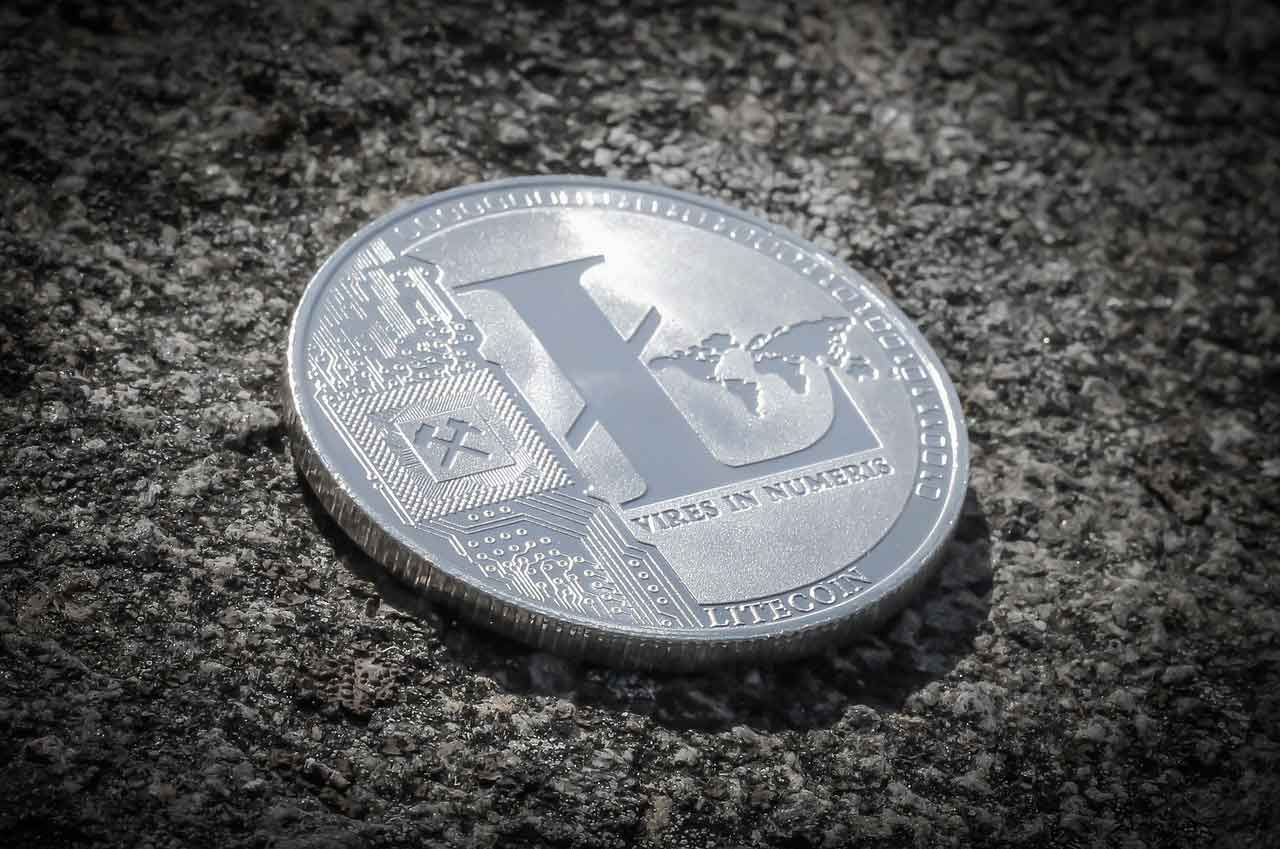Introduction
The world of investments can be a rollercoaster ride, with its shares of ups and downs. In uncertain times, many investors find themselves wondering when their investments will recover. Whether it’s a stock market crash, an economic downturn, or a global crisis, the impact on investments can be significant.
Understanding the timing of investment recovery is crucial for investors to make informed decisions and manage their portfolios effectively. While the future is inherently unpredictable, there are certain factors that can influence the speed and extent of investment rebound.
This article will dive into the importance of recovery in investments and explore the various factors that can affect the timing of investment recovery. We will examine how economic conditions, market volatility, and investor sentiment contribute to the recovery timeframe. Furthermore, we will provide historical examples and strategies to navigate the ups and downs of investment recovery.
Investment recovery is not guaranteed, but with the right knowledge and approach, investors can increase their chances of long-term profitability. By understanding the dynamics of the market, assessing the impact of external factors, and adopting a diversified approach, investors can better position themselves to weather the storms of uncertainty.
Now, let’s delve deeper into the factors that can influence investment recovery and explore the strategies that can help investors navigate these challenging times.
The Importance of Recovery in Investments
Recovery in investments is a crucial aspect that all investors strive for. When investments experience a downturn, it can lead to financial losses and uncertainty. Therefore, understanding the importance of recovery in investments is essential for investors to achieve their financial goals.
First and foremost, investment recovery ensures the preservation and growth of capital. When investments bounce back from a decline, investors regain the value they lost, and their portfolios begin to appreciate again. This not only helps offset previous losses but also enables investors to continue building their wealth.
Recovery also plays a significant role in investor confidence. When investments show signs of recovery, it instills a sense of stability and optimism in the market. This encourages investors to stay invested and even attracts new investors, leading to increased liquidity and market activity. It is this collective confidence that drives economic growth and fosters a healthy investment ecosystem.
Moreover, investment recovery allows investors to take advantage of long-term gains. Over time, well-performing investments can generate substantial returns that surpass the initial investment. By staying invested and weathering the storms of market volatility, investors have the opportunity to participate in the potential upside of their chosen investment vehicles.
Recovery in investments also has a wider impact on the broader economy. When investments rebound, it often signifies an improvement in business conditions and economic growth. This results in job creation, increased consumer spending, and overall prosperity. A healthy investment climate contributes to economic stability and fosters a positive environment for businesses to thrive.
Finally, investment recovery allows investors to achieve their financial goals. Whether it’s saving for retirement, funding education, or realizing long-held aspirations, the recovery of investments is crucial for investors to attain their desired financial outcomes. It provides them with the opportunity to accumulate wealth, generate income, and secure their financial future.
In essence, investment recovery is of utmost importance as it ensures the preservation and growth of capital, boosts investor confidence, offers long-term gains, stimulates economic growth, and helps investors achieve their financial goals. Now, let’s explore the factors that can influence the timing of investment recovery.
Factors Affecting the Timing of Investment Recovery
The timing of investment recovery can vary widely depending on several key factors. Understanding these factors is crucial for investors as they navigate the ups and downs of the investment landscape. Let’s delve into the primary factors that can influence the timing of investment recovery.
Economic Conditions: The state of the overall economy plays a significant role in investment recovery. During a recession or economic downturn, investments tend to suffer as businesses face challenges and consumer spending declines. However, when the economy begins to recover and business conditions improve, investments have the potential to bounce back. Factors such as GDP growth, employment rates, inflation, and government policies can all impact the speed and strength of investment recovery.
Market Volatility: Market volatility is another critical factor that affects the timing of investment recovery. Sudden market fluctuations and significant price swings can create uncertainty and erode investor confidence. A highly volatile market environment can delay the recovery process as investors hesitate to enter or re-enter the market. Conversely, a more stable and predictable market can facilitate quicker recovery as investors regain confidence and engage in active trading.
Investor Sentiment: The sentiment and behavior of investors can significantly influence the timing of investment recovery. During periods of market downturn, fear and panic can drive investors to sell their holdings, further exacerbating the decline. Conversely, during recovery phases, optimism and positive sentiment can accelerate the upward trajectory of investments. It is crucial for investors to analyze and understand investor sentiment as it can impact market trends and the timing of investment recovery.
Industry-Specific Factors: Each industry has its own unique dynamics that can affect the timing of recovery. For example, certain sectors, such as technology or healthcare, may have quicker recovery periods due to their resilience and potential for growth. On the other hand, industries that are heavily reliant on physical infrastructure or face significant regulatory challenges may experience slower recovery. Analyzing industry-specific factors can help investors make informed decisions and position themselves accordingly.
Global Events: Global events, such as geopolitical tensions, natural disasters, or pandemics, can have a profound impact on investment recovery. These events introduce a high level of uncertainty, which can lead to increased market volatility and delays in investment rebound. While the timing and magnitude of recovery in such situations are difficult to predict, they highlight the importance of diversification and risk management for investors.
These factors are not exhaustive, and the timing of investment recovery can be influenced by a multitude of other variables. It is crucial for investors to stay informed, monitor market conditions, and adapt their strategies accordingly. By understanding the factors that can affect investment recovery, investors can make more informed decisions and navigate the ever-changing investment landscape.
Economic Conditions and their Impact on Investments
Economic conditions have a significant impact on the performance and recovery of investments. Understanding how economic factors influence investments is essential for investors to navigate the ever-changing investment landscape. Let’s explore the key economic conditions and their impact on investments.
Gross Domestic Product (GDP): GDP is a measure of a country’s economic output. When GDP grows, it indicates a healthy and expanding economy. This generally leads to increased business activity, higher corporate earnings, and a positive impact on investments. Conversely, during economic downturns or recessions, a decline in GDP can negatively affect investments, leading to slower recovery. Monitoring GDP growth is essential for investors to gauge the economic conditions that impact their investments.
Employment Rates: Unemployment rates can provide insights into the overall health of an economy. In times of high unemployment, consumer spending tends to decline, which has a negative impact on businesses and investments. Conversely, during periods of low unemployment, there is typically an increase in consumer spending, leading to potential growth in investments. Investors should closely monitor employment rates to assess the potential impact on their investment portfolios.
Inflation: Inflation refers to the increase in prices for goods and services over time. High inflation erodes the purchasing power of consumers and can have a detrimental effect on investments. However, moderate inflation can be beneficial, as it signifies a growing economy and can lead to increased corporate profits. It is essential for investors to consider the impact of inflation on their investments and adjust their strategies accordingly.
Interest Rates: Interest rates set by central banks influence borrowing costs, lending rates, and the overall cost of capital. Lowering interest rates stimulates borrowing and spending, which can be positive for investments. Lower interest rates can also increase the present value of future cash flows, making certain investments more appealing. Conversely, increasing interest rates can have a dampening effect on investments, particularly those that rely on borrowing for growth. Investors should keep a close eye on interest rate movements as they can impact investment recovery.
Government Policies: Government policies, such as tax reforms, fiscal stimulus packages, or regulatory changes, can have a significant impact on investments. Positive policies that promote business growth and investment can help accelerate the recovery process. Conversely, unfavorable policies can hinder investment recovery and impact specific industries or sectors. Investors should stay informed about government policies and their potential impact on investments to navigate the changing landscape effectively.
International Trade: Global trade plays a crucial role in the performance of investments, particularly for multinational corporations. Tariffs, trade agreements, and geopolitical tensions can all impact international trade flows and, subsequently, investments. Changes in trade policies can introduce uncertainty and volatility into the market, influencing the timing and extent of investment recovery. Being aware of international trade dynamics is essential for investors with global portfolios.
Economic conditions are complex and interdependent, making it challenging to predict investment recovery with certainty. However, by closely monitoring these economic indicators and understanding their impact on investments, investors can make more informed decisions and position themselves for potential recovery opportunities.
Market Volatility and its Influence on Investment Recovery
Market volatility is an inherent characteristic of the investment landscape. Fluctuations in stock prices, bond yields, and other financial instruments can have a significant impact on investment recovery. Understanding market volatility and its influence on investment recovery is crucial for investors to navigate the ups and downs of the market. Let’s explore the relationship between market volatility and investment recovery.
Increased Uncertainty: Market volatility often coincides with increased uncertainty and risk aversion among investors. During periods of heightened volatility, investors become more cautious and may choose to sell their holdings, contributing to a decline in asset prices. This increased uncertainty can delay investment recovery as market participants wait for signs of stability before re-entering the market.
Emotional Decision Making: Market volatility can trigger emotional decision making among investors. Fear and panic can lead to impulsive selling or excessive risk aversion, which may not align with sound investment principles. Emotional decision making can prolong investment recovery as it may lead to suboptimal investment choices and missed opportunities for profit during market rebounds.
Impact on Investor Sentiment: Market volatility has a direct impact on investor sentiment. Prolonged periods of volatility can erode confidence and create a negative perception of the market. This can slow down investment recovery as hesitant investors may be reluctant to re-enter the market, further exacerbating the downturn. Conversely, a reduction in volatility can boost investor sentiment, leading to a more rapid recovery.
Trading and Liquidity: Market volatility affects trading volumes and liquidity. During periods of high volatility, trading volumes tend to increase as investors actively respond to market movements. However, extreme volatility can cause liquidity to dry up, making it difficult to execute trades at desirable prices. Limited liquidity can impact the timing of investment recovery as it may take longer for buyers and sellers to find a mutually acceptable price.
Opportunities for Value Investing: Market volatility can create opportunities for value investors. During periods of market downturns, undervalued assets may become available, allowing investors to acquire investments at a lower price. Holding these investments through the recovery phase can lead to significant gains. For value investors, market volatility presents a potential avenue for investment recovery.
Long-Term Perspective: Market volatility can test investors’ resolve and discipline. However, it is important to maintain a long-term perspective when assessing investment recovery. History has shown that markets tend to recover over time, and short-term fluctuations can be overcome by holding quality investments. Adopting a patient approach and avoiding knee-jerk reactions to market volatility is essential for long-term investment recovery.
While market volatility can create challenges for investors, it is also a source of potential opportunities. By understanding the impact of market volatility on investment recovery and maintaining a disciplined approach, investors can navigate the volatility and position themselves for potential gains when the market rebounds.
The Role of Investor Sentiment in Determining Recovery Timeframes
Investor sentiment, characterized by the emotions and attitudes of market participants, plays a crucial role in determining the timing of investment recovery. Understanding how investor sentiment influences recovery timeframes is essential for investors to navigate market cycles effectively. Let’s explore the impact of investor sentiment on investment recovery.
Fear and Panic: During periods of market downturns or heightened volatility, fear and panic can grip investors. This negative sentiment often leads to selling pressure, which can contribute to further declines in asset prices. As fear dominates investor sentiment, recovery timeframes may be prolonged as hesitant investors wait for signs of stability before re-entering the market.
Optimism and Greed: Conversely, periods of market recovery or positive economic news can generate optimism and greed among investors. Optimistic sentiment can fuel buying pressure and drive asset prices higher, potentially leading to faster recovery timeframes. However, excessive optimism and greed may also create inflated asset valuations, which can result in volatile market conditions and potential future corrections.
Herd Mentality: Investor sentiment is often influenced by the behavior of other market participants. The herd mentality describes a phenomenon in which individuals mimic the actions of the majority as they fear missing out on potential gains or avoiding losses. During periods of market euphoria, the herd mentality can accelerate recovery timeframes as investors rush to capitalize on the upward trend. Conversely, during market downturns, the herd mentality can prolong recovery as investors may remain reluctant to re-enter the market until others do.
Contrarian Investing: Contrarian investors take a different approach and actively seek opportunities when investor sentiment is negative. They take advantage of market pessimism by buying assets that are undervalued or out of favor with the general investing public. Contrarian investing can potentially shorten recovery timeframes as these investors contribute to price stabilization and upward momentum.
Media Influence: The media plays a significant role in shaping investor sentiment. News outlets and financial commentators often amplify market movements, contributing to heightened emotions among investors. Media coverage can influence perception and drive sentiment, potentially exacerbating market volatility. Being aware of the impact of media influence is crucial for investors to maintain a balanced perspective and make well-informed decisions.
Behavioral Biases: Investor sentiment is also influenced by behavioral biases, such as loss aversion, anchoring, or herding behavior. These biases can lead to irrational decision-making and significant deviations from fundamental valuations. Understanding and managing these biases is essential for investors to make rational decisions and avoid being swayed solely by sentiment-driven market trends.
Investor sentiment can significantly impact recovery timeframes, as it plays a pivotal role in driving market dynamics. Fear and panic can prolong recovery, while optimism and positive sentiment can hasten it. The influence of investor sentiment underscores the importance of maintaining a rational and disciplined approach to investing, regardless of market conditions.
Historical Examples of Investment Recovery Timelines
Examining historical examples of investment recovery timelines can provide valuable insights into the potential duration and patterns of recovery. While every market downturn and recovery is unique, these examples can offer perspective on the resilience of investments and the varying timeframes for recovery. Let’s explore a few notable historical examples.
The Global Financial Crisis (2008-2009): The global financial crisis, triggered by the collapse of the housing market and the subsequent banking crisis, led to a severe market downturn. Many investments experienced significant declines, with some reaching their lowest points in early 2009. However, the recovery process varied across different asset classes. While it took several years for stock markets to fully recover, bonds and other fixed-income investments experienced a relatively quicker rebound. The recovery timeframe for equity investments ranged from a few years to a decade, depending on the specific market and sector.
The Dot-Com Bubble (2000-2002): During the late 1990s and early 2000s, the dot-com bubble saw a rapid rise in internet-based companies’ stock prices, followed by a sharp decline. Many investors experienced substantial losses as numerous dot-com companies failed. The recovery process for investments affected by the dot-com bubble varied widely. Some companies and sectors never fully recovered, while others experienced a lengthy recovery period. It took years for the broader market to regain its previous highs, emphasizing the importance of diversification in navigating recovery.
The Great Recession (2007-2009): The Great Recession, triggered by the collapse of the housing market and the subsequent impact on financial institutions, led to a global economic crisis. Investments across various asset classes suffered significant declines. The recovery process varied based on the specific market and investment type. While some sectors experienced a faster recovery, others, such as real estate, took much longer to regain their pre-recession levels. The recovery timeframe for most investments ranged from a few years to a decade.
The COVID-19 Pandemic (2020-2021): The COVID-19 pandemic caused widespread economic disruptions and market volatility. Many investments experienced abrupt declines as global economies went into lockdown. However, the recovery process has been relatively swift, especially for certain sectors such as technology and healthcare. Government stimulus measures, central bank interventions, and vaccine advancements have played a vital role in boosting investor confidence and fueling the recovery. While the pandemic’s long-term effects are still unfolding, these early recovery trends demonstrate the resilience of investments and the potential for a relatively quick rebound in certain sectors.
It is important to note that historical examples indicate general trends and patterns, but each market downturn and recovery is unique. Recovery timeframes can vary widely depending on factors such as the severity of the crisis, economic conditions, investor sentiment, and government interventions. Investors should approach historical examples as reference points and consider them in conjunction with current market dynamics when assessing recovery potential.
Strategies for Navigating Investment Recovery
Navigating investment recovery requires a thoughtful and strategic approach. While the timing and extent of recovery may be uncertain, there are several strategies that investors can employ to position themselves for potential gains. Let’s explore some strategies for navigating investment recovery.
Maintain a Long-Term Perspective: It’s important to maintain a long-term perspective when it comes to investments. Short-term market fluctuations should not dictate investment decisions. By focusing on long-term goals and staying committed to a well-thought-out investment plan, investors are better positioned to weather the ups and downs of the market and take advantage of potential recovery opportunities.
Practice Diversification: Diversification is a fundamental strategy for managing risk and maximizing potential returns. By spreading investments across different asset classes, sectors, and regions, investors can reduce their exposure to individual investment volatility. Diversification can help mitigate the impact of a specific investment’s decline and increase the likelihood of capturing recovery opportunities in other areas of the portfolio.
Regularly Review and Rebalance: Regularly reviewing and rebalancing your investment portfolio is essential for ensuring it aligns with your goals and risk tolerance. This involves periodically assessing the performance of your investments and making adjustments as necessary. Rebalancing can help in capitalizing on potential recovery opportunities by selling high-performing assets and reinvesting in assets that may be poised for a rebound.
Stay Informed: Knowledge is power in the world of investments. Staying informed about market trends, economic indicators, and company fundamentals enables investors to make informed decisions. Keeping an eye on news, research reports, and expert insights can provide valuable insights into investment recovery prospects and potential areas of opportunity.
Manage Emotions: Emotions can often cloud rational decision-making during periods of market volatility. Managing emotions is a key aspect of navigating investment recovery. It’s important to remain disciplined and avoid making impulsive decisions based on fear or greed. Having a well-defined investment plan and sticking to it can help investors stay focused and avoid emotional biases that may hinder recovery.
Consider Professional Advice: Seeking professional financial advice can be beneficial, especially during challenging times. Financial advisors can provide personalized guidance and expertise in navigating investment recovery. Their knowledge of market trends, risk management strategies, and investment products can help investors make informed decisions aligned with their financial goals.
Investigate Opportunities: Market downturns often create opportunities for value investors. Conducting thorough research and identifying undervalued investments can position investors to benefit from potential recovery. Looking beyond short-term volatility and focusing on long-term fundamentals can help investors uncover hidden gems that may rebound strongly when market conditions improve.
No strategy can guarantee investment recovery, as the market is inherently uncertain. However, employing these strategies can enhance an investor’s potential to mitigate risk, capture recovery opportunities, and achieve long-term financial goals. By staying disciplined, diversified, informed, and focused on the long-term, investors can navigate investment recovery with confidence.
The Impact of Diversification on Recovery Potential
Diversification plays a crucial role in managing risk and enhancing the recovery potential of an investment portfolio. By spreading investments across different asset classes, sectors, and regions, diversification reduces exposure to the fluctuations of any single investment and increases the likelihood of capturing recovery opportunities. Let’s explore the impact of diversification on investment recovery potential.
Risk Mitigation: Diversification helps mitigate risk by reducing the impact of a decline in any particular investment. When one asset class or sector experiences a downturn, investments in other asset classes or sectors may offset those losses. This risk mitigation aspect of diversification can protect the overall portfolio from significant declines and potentially shorten the recovery process. By avoiding over-concentration in one investment, investors increase their chances of recovering from losses more quickly.
Exposure to Multiple Recovery Paths: Different assets may have varying recovery timelines depending on market conditions and economic factors. By holding a diverse range of investments, investors increase their exposure to multiple recovery paths. While one investment may take a longer time to recover, others may experience a faster rebound. This diversification of recovery timelines can enhance the overall recovery potential of the portfolio and provide a smoother path to regain lost value.
Capturing Opportunities: Market recoveries are not uniform across all asset classes or sectors. Diversification allows investors to capture opportunities that emerge during the recovery process. While certain investments may still be in a downturn, others may have already started to rebound. Holding a diversified portfolio positions investors to capture these recovery opportunities as they arise, potentially enhancing overall portfolio performance.
Rebalancing and Reallocation: Diversification also facilitates the rebalancing and reallocation of investments. During a recovery phase, some investments may have gained significant value, altering the original asset allocation. Rebalancing involves selling a portion of those outperforming investments and reallocating the proceeds into underperforming or undervalued assets. This disciplined approach allows investors to take profits from well-performing investments and invest in assets that have the potential for a more significant recovery.
Reducing Volatility: Diversification can help reduce portfolio volatility. By combining assets with different risk profiles, investors can create a portfolio with a smoother return pattern. This reduction in volatility provides more stability during periods of market turbulence. When markets are volatile, a diversified portfolio may experience smaller fluctuations in value, which can alleviate potential stress and psychological challenges for investors, enabling them to stay focused on long-term objectives.
Protection Against Unforeseen Events: Diversification helps protect investors against unforeseen events that may impact specific industries or regions. Events such as economic crises, geopolitical tensions, or natural disasters can have a significant impact on specific investments. Holding a diversified portfolio spreads the risk associated with such events and provides a buffer against concentrated losses. This protection can aid in preserving capital during challenging times and increase the potential for a faster recovery when market conditions improve.
In summary, diversification is a powerful strategy that has a positive impact on investment recovery potential. By minimizing risk, capturing opportunities, facilitating rebalancing, reducing volatility, and protecting against unforeseen events, diversification enhances the likelihood of recovering from market downturns and achieving long-term investment success. Incorporating diversification as a core principle of investment strategy can significantly contribute to the recovery potential of an investment portfolio.
Conclusion
Navigating investment recovery requires a combination of knowledge, strategy, and discipline. While the timing and extent of recovery may be uncertain, understanding the key factors and strategies can help investors position themselves for potential gains. The importance of recovery in investments cannot be overstated, as it ensures the preservation and growth of capital, boosts investor confidence, drives economic growth, and helps investors achieve their financial goals.
Factors such as economic conditions, market volatility, and investor sentiment play significant roles in determining the timing of investment recovery. Economic indicators, such as GDP, employment rates, inflation, and government policies, provide insights into the broader economic context that impacts investments. Market volatility affects recovery timeframes through increased uncertainty, emotional decision making, and impact on investor sentiment. Investor sentiment itself is influenced by factors such as fear, optimism, herd mentality, media influence, and behavioral biases.
Learning from historical examples, such as the global financial crisis, the dot-com bubble, the Great Recession, and the COVID-19 pandemic, helps us appreciate the varied recovery timeframes and the potential for resilience in investments. By examining these examples, investors can gain valuable insights into recovery patterns and the importance of diversifying their portfolios.
Implementing strategies for navigating investment recovery, such as maintaining a long-term perspective, practicing diversification, staying informed, managing emotions, seeking professional advice, investigating opportunities, and conducting regular portfolio reviews, can increase the likelihood of achieving recovery and long-term financial goals.
In conclusion, while investment recovery is subject to various external factors and market dynamics, investors can take proactive steps to position themselves for potential gains. By understanding the factors that impact recovery, employing sound strategies, and staying focused on long-term objectives, investors can navigate the ups and downs of the market with confidence and increase their chances of achieving investment recovery and financial success.

























